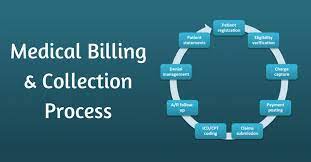Medical billing and patient collections can be a challenging task for healthcare providers, especially with the increasing cost of healthcare and the rise of high deductible health plans. Unpaid medical bills can create a significant burden on healthcare providers, leading to bad debt and financial losses. In this article, we will discuss some strategies for improving patient collections and reducing bad debt in medical billing.

Strategies for improving patient collections and reducing bad debt
- Verify Insurance Coverage: The first step in improving patient collections is to verify insurance coverage before providing any medical services. This will help ensure that patients are aware of their financial responsibilities and that healthcare providers are paid for their services.
- Communicate Clearly: Healthcare providers should communicate clearly with patients about their medical bills, including the expected costs, insurance coverage, and payment options. This will help patients understand their financial responsibilities and reduce confusion during payment collection.
- Offer Payment Plans: Offering payment plans can make it easier for patients to pay their medical bills over time. This can also reduce the burden on healthcare providers by ensuring a steady stream of revenue.
- Educate Patients: Educating patients about the importance of paying their medical bills can help increase patient responsibility and reduce the number of unpaid bills. Healthcare providers can provide information about the consequences of unpaid medical bills, such as collections and credit damage.
- Provide Multiple Payment Options: Healthcare providers should provide multiple payment options, including online payments, credit card payments, and automatic payments. This will make it easier for patients to pay their medical bills and reduce the risk of missed payments.
- Train Staff: Healthcare providers should train their staff to be knowledgeable about medical billing and patient collections. This will ensure that staff members can answer patient questions and provide accurate information about medical bills and payment options.
- Outsource Collections: Healthcare providers can consider outsourcing their collections to a third-party vendor. This can help reduce the burden on staff and increase the likelihood of payment collection.
- Monitor and Analyze Performance: Healthcare providers should monitor and analyze their performance in patient collections and bad debt. This will help identify areas for improvement and ensure that healthcare providers are maximizing their revenue.
Conclusion
In conclusion, improving patient collections and reducing bad debt in medical billing requires a combination of strategies, including verifying insurance coverage, communicating clearly with patients, offering payment plans, educating patients, providing multiple payment options, training staff, outsourcing collections, and monitoring performance. By implementing these strategies, healthcare providers can ensure a steady stream of revenue and provide quality care to their patients.

Recent Comments